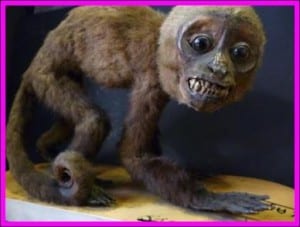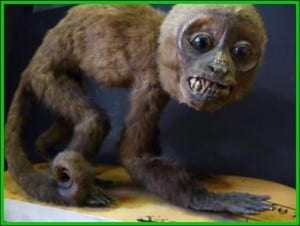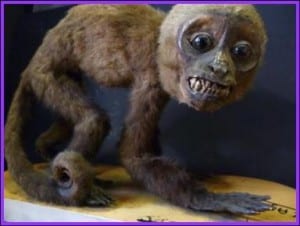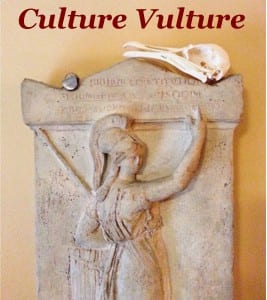Ask a Curator day 2014
By ucwemdo, on 16 September 2014
On Wednesday 17th September UCL Museums will be taking part in the Ask A Curator Day event on twitter. This event is growing year on year, and at the time of writing, this week’s event has 520 museums taking part from 36 countries. We know that asking a question in a museum can sometimes feel intimidating, and that we curators can sometimes be hard to track down. There’s so much to do that we aren’t always the most available group of people (though we really do try). We are taking part in the day as part of our commitment to make our collections as accessible as possible.
Ask A Curator works like this. Anyone in the world with a twitter account can tweet a question with the #AskACurator hashtag, and it will be answered by any of the institutions taking part. If you have a specific question for us you can tweet it directly to us @UCLMuseums and one of our staff will do their best to answer you. The Grant Museum of Zoology is taking part using @GrantMuseum, as is the Petrie Museum of Egyptian Archaeology on @PetrieMuseEgypt.
In preparation for this I thought I would introduce you to our members of staff taking part…
Jack Ashby – Jack is the Manager of the Grant Museum of Zoology. He is responsible for the strategic direction of the Museum, as well as managing the Museum’s resources. Much of his time is spent on creating opportunities for the public to engage with research going on at UCL. A zoologist by training with a particular interest in Australian mammals, he still spends as much time as he can in the field. He’ll be taking questions via @GrantMuseum throughout the day and from the @UCLMuseums account from 12 – 1 pm. Read the rest of this entry »
Specimen of the Week: Week 153
By Jack Ashby, on 16 September 2014
 As a scientist, with Vulcan-like levelheadedness, my outlook on the natural world is totally free of emotion. My interactions with it are purely perfunctory, in order to amass and analyse cold data, motivated solely by the advancement of scientific understanding of solid facts. The world is only there to be databased. It is irrelevant whether facts are “interesting” or not, all that matters is if they are useful for detecting some larger pattern. Anyone who says otherwise is a panda-hugging sentimental fluff-monger…
As a scientist, with Vulcan-like levelheadedness, my outlook on the natural world is totally free of emotion. My interactions with it are purely perfunctory, in order to amass and analyse cold data, motivated solely by the advancement of scientific understanding of solid facts. The world is only there to be databased. It is irrelevant whether facts are “interesting” or not, all that matters is if they are useful for detecting some larger pattern. Anyone who says otherwise is a panda-hugging sentimental fluff-monger…
Wouldn’t it be weird if ecologists thought like that? On the one hand science is supposed to be independent of emotion, but on the other most of us are only in it because of our emotional attachment to the subject matter (animals and ecosystems).
Normally on this blog I take the chance to rave about the animals that amaze and excite me. This week I’m going to highlight one that I utterly despise*.
This week’s Specimen of the Week is… Read the rest of this entry »
Magic Assemblage: Magic Assembly
By Edmund Connolly, on 8 September 2014
By freelance journalist Rammy Elsaadany
The premise of the exhibition was that a group of fresh and energetic Central Saint Martin students would create a piece that was to be an interpretation of each artists understanding of the museum objects and the theme of historic representation, as I hurriedly power walked to the museum ( I am perpetually late to events) my mind began to wonder about the infinite ways that this repository of ancient Egyptian objects ranging from art to every day things could generate creative pieces in the next generation of artists.
Specimen of the Week: Week 152
By Mark Carnall, on 8 September 2014
 As you may have gathered, we’re fans of science fiction here at UCL Museums, from the Institute of Archaeology Keeper preparing for the zombie apocalypse, to the Petrie Museum attending LonCon and own film nights which often feature radioactive monsters, giant ants and stop motion dinosaurs. This week’s specimen of the week is straight out of science fiction. So strap into your power loader, politely request alien lifeforms to stay away from young children whilst comparing them to a female dog and read on.
As you may have gathered, we’re fans of science fiction here at UCL Museums, from the Institute of Archaeology Keeper preparing for the zombie apocalypse, to the Petrie Museum attending LonCon and own film nights which often feature radioactive monsters, giant ants and stop motion dinosaurs. This week’s specimen of the week is straight out of science fiction. So strap into your power loader, politely request alien lifeforms to stay away from young children whilst comparing them to a female dog and read on.
This week’s Specimen of the Week is… Read the rest of this entry »
Happy 78th Thylacine Day: Remember the little guys
By Jack Ashby, on 7 September 2014
Today, in Australia, is National Threatened Species Day, but far more importantly. to Grant Museumers, it’s Thylacine Day. Both of these events commemorate the ludicrously avoidable death of the last known thylacine – modern times’ largest marsupial carnivore – on 7th September 1936. Today, for the first time, I am actually in Australia for 7th September, so in this year’s annual Thylacine Day post I’d like to explore what it is about Australian mammals that makes me go all nerdy – the shear diversity of tiny things, that on the whole people have no idea about. (For more on the thylacine, including why we celebate it so hard at the Grant, look through previous Thylacine Day posts on this blog).
The area of zoology I am most passionate about is Australian mammals, and as a result I spend 8-10 weeks each year over here trapping animals for conservation NGOs and university research programmes. As far as I’m concerned, although there are just 378 mammal species in Australia, it’s the best fauna there is. You only have to go 50km and you might find a whole new set of mammals. Australia has a lot of things going for it, but I will shout you down if you argue that any of them outshine the wildlife and ecosystems. The thing is so few people here, or elsewhere, have ever heard of most of them. Sure, people know that kangaroos and wallabies exist – they are the national icon, but go into any business and ask what kind of wallaby is chewing on its lawn and you’ll probably get a blank response. There are 45 species of Australian kangaroo and wallaby (excluding bettongs and pottoroos). People’s lofts and gardens are pested by possums (nearly always one species – the brushtail), but there are 25 different kinds. Once you get beyond these, koalas, wombats, dingoes, platypuses, echidnas and “bandicoots” (11 species), the rest of the Australian mammalian fauna, I fear, goes largely unloved.
I’m not whinging about the fact that people don’t see tiny mammals and instantly know what it is. I just want to take the time to give them a shout-out.
Read the rest of this entry »
UCL and Bright Club at the Green Man Festival
By ucwemdo, on 2 September 2014
10 UCL researchers, 2 Public Engagement staff members, one Welsh festival. What could go wrong?
Armed with wet wipes, cereal bars and boxed wine, the ‘fun bus’ set off from UCL one Thursday afternoon, destination: the Green Man festival in Brecon, Wales, to present two performances of Bright Club*in the Omni tent of Einstein’s Garden**. The cheery smiles and getting-to- know-each-other chat faded to an apprehensive (maybe even regretful?) silence as we left the sunny skies of London behind and proceeded to drive into what was essentially a massive rain cloud. Rain drummed, nay pounded, the car and all we could see were dark threatening clouds on all sides. Putting up tents was going to be great fun in this.
Specimen of the Week:Week 151
By Mark Carnall, on 1 September 2014
 I’m taking up the mantle this week and I’m a sucker for puns relating to my specimen choice in this opening paragraph. The first time I discovered specimens of this week’s species was on the black sands of the North Island of New Zealand. Thousands of these were washed up along the coast, their bright white remains contrasting highly against the volcanic beach OH LOOK AT THAT I’M A FIELDWORK BORE.
I’m taking up the mantle this week and I’m a sucker for puns relating to my specimen choice in this opening paragraph. The first time I discovered specimens of this week’s species was on the black sands of the North Island of New Zealand. Thousands of these were washed up along the coast, their bright white remains contrasting highly against the volcanic beach OH LOOK AT THAT I’M A FIELDWORK BORE.
Before I regale you about my gap yahr (spent volunteering in a museum and working various part time jobs) let us move swiftly on to revealing this week’s specimen of the week.
This week’s Specimen of the Week is….
State of the Union! Natural History Museums 2014
By Mark Carnall, on 29 August 2014
Reposting of an article I wrote for the NatSCA website in my capacity on the #NatureData Coordinating Committee, summarising the ‘State of the Union’ for natural history museums following the SPNHC 2014 conference.
At the end of June was a rather special event; the coming together of three subject specialist networks (SSN), the Society for the Preservation of Natural History Collections (SPNHC), the Natural Sciences Collections Association (NatSCA) and the Geological Curators’ Group (GCG) hosted by Amgueddfa Cymru National Museum Wales. Between them, these three networks represent a sizeable chunk of curators, conservators, directors and educators who work in and with natural history museums and collections. Each SSN has yearly meetings but a syzygy rarely happens.
The full conference was a six day affair packed with field trips, stores tours, talks, workshops, demos, poster sessions and discussions attended by over 250 delegates from almost as many natural history institutions. This provided a great opportunity to catch up and meet friends, facilitated the catharsis in sharing frustrations unique to natural history museums and offered a rare chance to establish a sense of ‘the state of the union’ in natural history museums across Europe, North America and elsewhere.
You can read the rest of this entry over at the NatSCA website at this link.
Mark Carnall is the Curator of the Grant Museum of Zoology
Underwhelming Fossil Fish of the Month: August 2014
By Mark Carnall, on 29 August 2014
Welcome welcome to this month’s Underwhelming Fossil Fish of the Month. The mission of this blog series is to temporarily shine the spotlight on underwhelming fossil fish specimens from the Grant Museum collection. It’s not that the Grant Museum collection is particularly underwhelming, most fossil collections are made up of huge archives of fragmentary, broken and not-particularly-impressive material that have had their heyday in scientific research and are now just taking up space. This month, I’m taking a leaf out of singer-songwriter, actor, record producer, businessman, and philanthropist, Justin Timberlake’s book and I’m bringing SexyBack with this month’s fossil fish. Combing the drawers for suitable specimens this one stopped me in my tracks and got me blushing.
This specimen is bringing sexy back. The other underwhelming fossil fish of the months don’t know how to act. Warning, this month may not be suitable for those who are of a nervous disposition.
Take ’em to the bridge.
Culture Vulture: Digital Revolution at the Barbican
By Mark Carnall, on 28 August 2014
It’s been a while since we had a culture vulture review on the blog. For the uninitiated we share our thoughts on recent museum exhibitions and displays to demonstrate that we don’t all get put into a cupboard at the end of the day. Last weekend I made my way down to the Barbican Centre to see the tantalisingly titled Digital Revolution: An immersive exhibition of art, design, film, music and videogames. As you may have gathered, I’m a bit of a geek (is there even a need to use the label anymore? We’re all geeks now) and I’m always interested to see how ‘digital’ translates into museum exhibitions. A number of exhibitions I’ve been to in the past about digital art, design and video games always manage to make what should be exciting, schizophrenic and contemporary seem sterile and uninspiring through the lense of a museum display. How did Digital Revolution fare in my eyes?
 Close
Close




